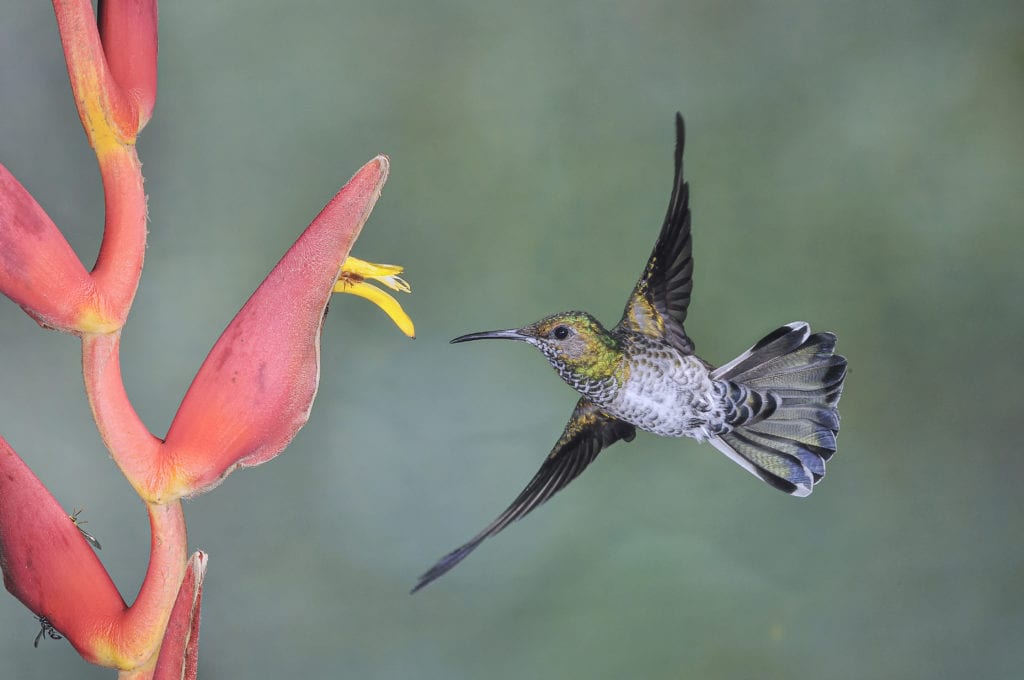Fun Hummingbird Information and Facts
They’re magical, colorful, and incredibly fast. With over 300 species, the hummingbird continues to mesmerize individuals with their jewel-toned feathers and lightning-fast speed. Known for the buzzing sound they make when they flutter around, which actually awarded them their name, these incredible birds are native to the New World and can’t be found in the wild anywhere else outside of the Western Hemisphere.
This month on September 5th, we celebrated National Hummingbird Day… what a great opportunity to learn more about this magical bird. For those who are interested in discovering expert tips on how to attract more hummingbirds to your backyard, patio, or balcony, you’ve come to the right place!
Hummingbird Information and Facts
These tiny creatures pack a lot of energy and power into a very small package. As they are widely known for their speed, here are some fast facts and information about hummingbirds to try to match their velocity:
- The world’s smallest bird, the bee hummingbird, is on average roughly two inches long and weighs in at a whopping 2 grams.
- These buzzing birds can’t use their feet to walk or hop but they can use them to scoot over on a branch, as well as to clean their feathers.
- Hummingbirds lay teeny tiny eggs. In fact, they lay the smallest eggs of any species of bird — they can be smaller than a jelly bean!
- A hummingbird’s beak doesn’t vacuum up nectar. Their tongue actually flicks the nectar up at a rate of 10 to 15 licks per second.
- The hummingbird can reach a top speed of 50 miles per hour and their wings can flap at roughly 80 beats per second.
- Although these birds have no sense of smell, their sense of eyesight is impeccable.
- These talented birds are the only birds that can fly backwards.
Despite their size, there are hundreds of interesting facts and information about hummingbirds. Interested in learning more? Discover more facts about hummingbirds here.
How to Attract More Hummingbirds
Are you looking to draw in more of these alluring birds to your backyard or balcony? Luckily, there are a number of ways to attract more hummingbirds to your outdoor oasis. One simple tactic to utilize is to use a bright red hummingbird feeder. However, you also need to be strategic about where you place the feeder for optimal results. Consider hanging the feeder near a natural perching area that offers shelter, as opposed to out in the open. On top of this, try to place the feeder out of direct sunlight to slow down the fermentation process. Then, to ensure the hummingbirds keep coming back for more, routinely check on the feeder to make sure it never runs out of nectar.
If you want to go above and beyond and you have the space, you can create a hummingbird garden with a variety of their favorite flowers, trees, and shrubs. If you opt to do this, it is recommended that you utilize a number of native plants and flowers in varying colors. When picking out flowers, aim for flowers that have longer, more tubular shapes as these attract hummingbirds the most.
Best Time of Day for Hummingbirds
If you want to have better luck spotting a hummingbird in your backyard, it’s important to know the best time of day for hummingbirds. The best time of day to watch hummingbirds is usually during dawn or dusk or even in the early morning or late afternoon, just before the sun goes down. Although these are their favorite times to eat, hummingbirds can still be spotted throughout the day. For those in the U.S., hummingbirds are more active and common during the spring in April and May as they are migrating north.
With National Hummingbird Day this month, be sure to take a moment to discover all of the fun and interesting information and facts about hummingbirds. Then, if you want to be able to witness some of these magnificent creatures for yourself, consider applying some of these techniques to your backyard, patio, or balcony to attract more hummingbirds to your space.
[DISCLAIMER] Not intended to be a substitute for professional veterinarian advice, diagnosis, or treatment. Always seek the advice of your veterinarian with any questions you may have regarding the medical condition of your pet. If you think your pet has a medical emergency, call or visit your veterinarian or your local veterinary emergency hospital immediately.


